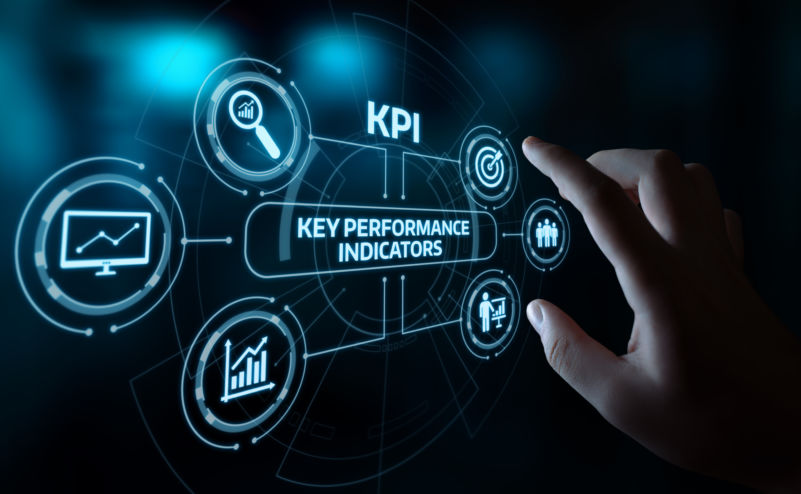How to attract and retain top talent in your business
One big challenge that many business leaders face when scaling up their business is attracting and retaining top talent.
If you are thinking about scaling up your business and you are ready for rapid and sustainable growth, talent is one of the top key areas you need to start working on straight away.
A recent survey conducted by McKinsey showed that 82% of companies don’t believe they’re recruiting highly talented people, and from those that do, only 7% think they can retain them. This is concerning. These companies are not being smart enough when it comes to hiring decisions. You need to have the right people in the right seats. Nothing is more crucial for the success of your business than having a high performing team filled with people that you can trust. At Monkhouse and Company, one of the first exercises we do with our clients in our two-day kick-off is a talent assessment. This simple grid sorts staff into A-Players, B-Players, C-Players and Toxic-As (see chart below).
What does an A-Player look like?
When we talk about ‘top talent’ we are talking about A-Players. So, what is an A player?
The definition of an A-Player is the top 5 to 10% of available talent for a given job, salary and location.
- An employee who is in the top 10% of their profession on an industry-wide basis for the salary paid.
- A person on your team whom you would enthusiastically rehire.
- The employees at an enterprise who drive all the profitability and growth.
- A person of high integrity who delivers on commitments.
- The employee every organisation covets.
– synonyms: awesome employee, top performer, high performer, rock star, all-star, superstar, team player, game-changer
(From the A Player by Rick Crossland)
A-Players are 10x or even 110x more productive than B Players. The best will do in a week what for the rest of the team can take 3 months to achieve. In a recent Gallup research into performance, they ranked people into A, B, C and D categories. When they got to discussing the results with the individuals involved, all the A-Players knew they were better performers than everyone else in their company. However, they didn’t know that they were also better than those outside the organisation. Good news for retention! But C and D Players thought they were above average because 9 times out of 10, there was no transparency of expected behaviours or performance in their company. They simply didn’t know. You need to be clear on what’s expected from the people in your team. Otherwise, they won’t know if they are achieving their goals, or if they are aligned with your company’s core values.
Here’s how to conduct a talent assessment to attract and retain top talent within your company, helping you build high performing teams and enhancing your company culture.
Start from the top
The top performers in your business – the A-Players – will live and breathe your company’s purpose and core values and that needs to start at the top: your executive team. As a business leader, this has to be the first place you look at talent. You need to put an action plan in place to move the % of A-Players upwards each quarter. Ultimately, your goal is to have up to 90% of A-Players in your leadership team.
With that in mind, you need to ask yourself two questions for every member of the executive team:
1.‘If they resigned tomorrow, would I be disappointed?’
2.‘Knowing what I know about them now, would I rehire them next year?’
There needs to be a resounding ‘yes’ to both of these questions. Any ‘no’ answers mean that person is going to hold you back again next year. Even if you just pause, it’s a ‘no’, because it wasn’t an obvious ‘yes’. You need to take action straight away. Every member of your top team needs to be an A-Player. If they’re not, this should be your target from the outset.
For one of our clients, it took more time than what we estimated to feel confident that they have the best people on the bus, and in the right seats on their executive teams. Some bad hiring decisions and being afraid of changing everyone at once has meant that it took twice as long to build the high performing team that they now can trust.
Assessing your managers
Once you know you have a high-performing executive team is time to look at the managers. 85% of an employee’s experience is driven by their interaction with their managers and those with leadership roles. Ultimately, this will have a massive impact on employee engagement and employee turnover in your company.
To begin with, your executive team will have to rank their managers using the same grid of A, B and C Players. To do this effectively you need a behavioural framework based on your company’s core values. It’s often easy to spot the people who don’t fit with your workplace culture or that are culturally adrift from the rest of the company. You’re trying to spot the 25 to 35% of employees that need values-based action.
Once your behavioural framework is in place, every manager needs to understand how it works and the expectations implicit in it. So, in any performance-related discussion, they should know instantly whether they are living this particular value and give evidence of them doing it.
Repeat the talent assessment every quarter, each time tracking your proportion of A Players.
What’s next?

Once executive and management teams have done it, it has to be applied to all of the employees. It has to be rolled out to your organisation in a way that every person has clarity on their individual KPIs (Key Performance Indicators). This will enable every employee to rate themselves objectively each day, week and month. Start with team members who are exceptional performers. Put their names on post-it notes and up they go into the A Player box. It’s important that you let them know that they’re a valued, top performer member of the team. And, of course, don’t forget to thank them for their contribution.
When it comes to the C-Players (the under-performers) there are several possible courses of action, being termination last resort. Maybe they are a cultural fit, but they are underperforming due to a lack of clarity about their KPIs. They might not be in the most suitable role for them, or in the right team. Perhaps they will be more productive somewhere else within the company. If their role seems too broad, try giving them less to do and be clear on what is expected from them at their job. Review the actions taken with them in the next quarter. If performance hasn’t improved by then, they need to go.
Once you have sort out the C-Players, it’s time to look at your B-Players. Those are not the best available talent for a given salary. You need to make sure you have a good KPI framework in place. Set up weekly checks-in to have performance-based or values-based conversations and evaluate their progress. Are they on their way to become A-Players? It’s imperative that your company gets to a place where employees know for themselves if they’ve had a good week against their KPI’s or not. This should be really clear and tracked every day.
How to spot the toxic A’s?
One of the things that make this process hard sometimes is having to make some really tough decisions along the way. As well as spotting your A-Players, you need to recognise and deal with the Toxic A’s. These are people who have particular skills and expertise that are valuable for the company but aren’t a good cultural fit. You may perceive that they are delivering well against their performance and for that, it would be hard to replace them These people are probably among the best performers of your team, but they really are not someone your A-Players will want to work with due to their toxic behaviour.

But, bear in mind that when it comes to dealing with Toxic A’s in your business, the answer isn’t always getting rid of them straight away. Sometimes an intervention can work. In his book, F**K PLAN B, Dominic shares the example of a client that gave one of his Toxic A’s an ultimatum, “using their core values, they narrowed in on one specific behaviour that was toxic. If it didn’t cease, he was out.” After that, that person got on board with the values and changed his behaviour straight away. But one thing is for sure, you need to be brutal about this. Just one bad apple can spoil the barrel.
The talent assessment tool allows you, not only to map out the existing talent within your company, from the top performers to the toxic ones. Work out the percentage of A-Players in your company and use this as a base-line for future progress.
Remember, your aim should be to get up to 90% of top performers (A-Players) in your company. Having dealt with the C-Players, you also need to ensure that B-Players only get to stay on the bus if they have the potential to become an A. And as you make progress towards this goal, you will see a big uptick in recruitment and retention – A-Players want to work with fellow A-Players, so you will attract and retain the best talent.
Finally, you can use a system such as Metronome Growth Software to monitor and track all the data needed for your talent assessment. We offer this as part of our service to clients and they find it a really easy tool for tracking KPIs, strategy, priorities and metrics.
- REFINE LEADERSHIP SKILLS
- STRATEGIC DIRECTION
- GREAT PLACE TO WORK
- EXECUTION FOCUS
- TRANSFORMATIONAL CHANGE
- EXIT READY BUSINESS